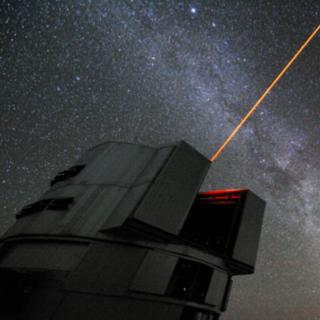Bibcode
Monelli, M.; Walker, A. R.; Martínez-Vázquez, C. E.; Stetson, P. B.; Gallart, C.; Bernard, E. J.; Bono, G.; Vivas, A. K.; Andreuzzi, G.; Dall'Ora, M.; Fiorentino, G.; Dorta, A.
Referencia bibliográfica
Monthly Notices of the Royal Astronomical Society, Volume 479, Issue 4, p.4279-4291
Fecha de publicación:
10
2018
Número de citas
14
Número de citas referidas
12
Descripción
We present a search and analysis of variable stars in the recently
discovered Crater II dwarf galaxy. Based on B, V, I data collected with
the Isaac Newton Telescope (FoV˜0.44 deg2), we detected
37 variable stars, of which 34 are bone-fide RR Lyrae stars of Crater II
(28 RRab, 4 RRc, 2 RRd). We applied the metal-independent (V, B - V)
Period-Wesenheit relation and derived a true distance modulus (μ =
20.30 ± 0.08 mag (σ = 0.16 mag). Individual metallicities
for RR Lyrae stars were derived by inversion of the predicted I-band
Period-Luminosity relation. We find a mean metallicity of [Fe/H] = -1.64
and a standard deviation of σ _{[Fe/H]}=0.21 dex, compatible with
either negligible or vanishing intrinsic metallicity dispersion. The
analysis of the colour-magnitude diagram reveals a stark paucity of blue
horizontal branch stars, at odds with other Galactic dwarfs, and
globular clusters with similar metal abundances.
Proyectos relacionados

Evolución Galáctica en el Grupo Local
La formación y evolución de galaxias es un problema fundamental en Astrofísica. Su estudio requiere “viajar atrás en el tiempo”, para lo cual hay dos enfoques complementarios. El mas extendido consiste en analizar las propiedades de las galaxias a diferentes distancias cosmológicas. Nuestro equipo se concentra en el otro enfoque, denominado
Emma
Fernández Alvar